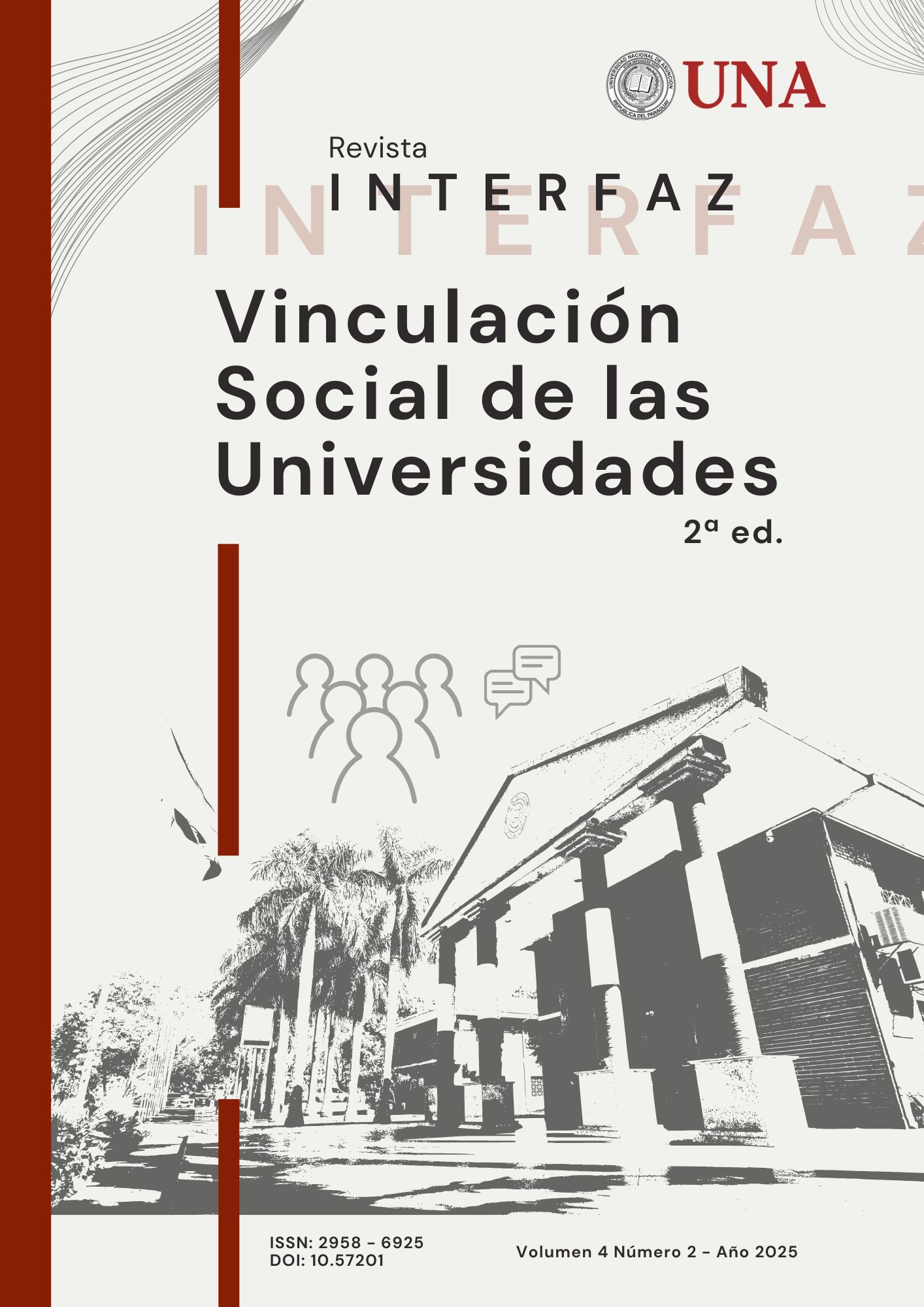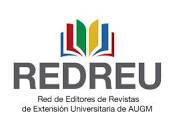Análisis de las cogniciones y comportamientos en torno a los Objetivos del Desarrollo Sustentable en la era COVID-19
DOI:
https://doi.org/10.57201/interfaz.2023.2.2.25Palabras clave:
análisis factorial confirmatorio, análisis factorial exploratorio, , comportamiento para la sustentabilidad, Objetivos del Desarrollo SustentableResumen
En el marco de las políticas contra el cambio climático, las expectativas de sostenibilidad en la gestión de los recursos han sido un eje de discusión y un tema central en la agenda de las ciudades. Es el caso de la diseminación de los Objetivos del Desarrollo Sustentable a través de la gobernanza universitaria y su impacto en la formación del capital intelectual. Sin embargo, las políticas antipandemia impactaron la diseminación de los ODS y orientaron la formación hacia la autogestión y el autocuidado a través del confinamiento y distanciamiento social. El objetivo del trabajo fue observar la estructura de las variables socioculturales y sociocognitivas que la literatura identifica como determinantes del comportamiento para la sustentabilidad. Se realizó un estudio no experimental con una selección no probabilística de 100 estudiantes que respondieron a un autoinforme de sus valores, normas, percepciones, creencias, actitudes, conocimientos y acciones relacionadas con los ODS. Se encontró una estructura factorial que demuestra una diseminación más simétrica de los ODS la cual contraviene a la gobernanza universitaria que promueve una diseminación asimétrica debido a la promoción del pensamiento crítico, la expresividad artística, el emprendimiento innovador y el trabajo colaborativo.
Referencias
Allen-Gilliam, J., Kring, D., Graham, R., Freeman, K., Swain, S., Faircloth, G., y Jenkinson, B. (2016). The impact of shared governance over time in a small community hospital. The Journal of Nursing Administration, 46(5), 257-264.
Amstutz, M. D. (2003). Corporate Governance konkret—SGS als Beispiel. Leadership in turbulenten Zeiten, 115-121.
Auld, G., y Renckens, S. (2019). Micro-Level Interactions in the Compliance Processes of Transnational Private Governance: The Market for Marine Stewardship Council Auditors and Assessors. Transnational Business Governance Interactions; Wood, S., Schmidt, R., Meidinger, E., Eberlein, B., Abbott, KW, Eds, 123-140.
Ballullaya, U. P., Reshmi, K. S., Rajesh, T. P., Manoj, K., Lowman, M., y Sinu, P. A. (2019). Stakeholder motivation for the conservation of sacred groves in south India: An analysis of environmental perceptions of rural and urban neighbourhood communities. Land Use Policy, 89, 104213.
Cheng, W. C., y Liu, C. H. (2011). Large-eddy simulation of turbulent transports in urban street canyons in different thermal stabilities. Journal of Wind Engineering and Industrial Aerodynamics, 99(4), 434-442.
Chowdhury, S., y Panday, P. K. (2018). Strengthening local governance in Bangladesh. Springer international publishing, 5(2), 169-181.
DesJardin, P. E., y Frankel, S. H. (1998). Large eddy simulation of a nonpremixed reacting jet: Application and assessment of subgridscale combustion models. Physics of Fluids, 10(9), 2298-2314.
Dyerson, R. (1992). Inmos: a case of unsuitable corporate governance?. Business Strategy Review, 3(1), 13-27.
Edwards, P., Sharma-Wallace, L., Wreford, A., Holt, L., Cradock-Henry, N. A., Flood, S., y Velarde, S. J. (2019). Tools for adaptive governance for complex social-ecological systems: a review of role-playing-games as serious games at the community-policy interface. Environmental Research Letters, 14(11), 113002.
Elad, C. (2001). Auditing and governance in the forestry industry: between protest and professionalism. Critical perspectives on accounting, 12(5), 647-671.
Ennser-Jedenastik, L. (2016). The party politicization of administrative elites in the Netherlands. Acta Politica, 51, 451-471.
Evstratov, I. Y., Kalaev, V. V., Zhmakin, A. I., Makarov, Y. N., Abramov, A. G., Ivanov, N. G., ... y von Ammon, W. (2001). Modeling analysis of unsteady three-dimensional turbulent melt flow during Czochralski growth of Si crystals. Journal of crystal growth, 230(1-2), 22-29.
Fabrigar, L. R., Wegener, D. T., MacCallum, R. C., y Strahan, E. J. (1999). Evaluating the use of exploratory factor analysis in psychological research. Psychological methods, 4(3), 272.
Fisman, R., y Werker, E. (2011). Innovations in governance. Innovation Policy and the Economy, 11(1), 79-102.
Gamage, D. T., y Zajda, J. (2009). Decentralisation and school-based governance: A comparative study of self-governing school models. Decentralisation, school-based management, and quality, 3-22.
Gamage, D., y Zajda, J. (2005). Decentralisation and school-based management: A comparative study of self-governing schools models. Educational Practice and Theory, 27(2), 35-58.
Gamage, D., y Zajda, J. (2005). Decentralisation, delegation and devolution: Towards selfgoverning schools. Political Crossroads, 12(3), 29-57.
Garmann, D. J., Visbal, M. R., y Orkwis, P. D. (2013). Comparative study of implicit and subgrid‐scale model large‐eddy simulation techniques for low‐Reynolds number airfoil applications. International Journal for Numerical Methods in Fluids, 71(12), 15461565.
Grönholm, S., y Jetoo, S. (2019). The potential to foster governance learning in the Baltic Sea Region: Network governance of the European Union Strategy for the Baltic Sea Region. Environmental Policy and Governance, 29(6), 435-445.
Gu, Z. L., Zhang, Y. W., Cheng, Y., y Lee, S. C. (2011). Effect of uneven building layout on air flow and pollutant dispersion in non-uniform street canyons. Building and Environment, 46(12), 2657-2665.
Hakim, C. M., Beik, I. S., Pramono, S. E., y Saoqi, A. A. Y. (2019). Designing shariah governance standard for zakat management organization: Indonesia experience. Working Papers-Puskas Baznas, 3.
Hayes, E. J. (2010). Shared decisions: Transforming university governance. The Journal of Higher Education Management, 25(1), 100.
Hernández, M. A., González, N., Hernández, L., Hernández, M. A., González, N., y Hernández, L. (2017). Management and
Governance. Hydrogeology of a Large Oiland-Gas Basin in Central Patagonia: San Jorge Gulf Basin, Argentina, 77-81.
Hoboth, P., Müller, A., Ivanova, A., Mziaut, H., Dehghany, J., Sönmez, A., y Solimena, M. (2015). Aged insulin granules display reduced microtubule-dependent mobility and are disposed within actin-positive multigranular bodies. Proceedings of the National Academy of Sciences, 112(7), E667-E676.
Jiang, Y.,y Chen, Q. (2002). Effect of fluctuating wind direction on cross natural ventilation in buildings from large eddy simulation. Building and environment, 37(4), 379-386.
Klein, M., Ketterl, S., y Hasslberger, J. (2019). Large eddy simulation of multiphase flows using the volume of fluid method: Part 1—Governing equations and a priori analysis. Experimental and Computational Multiphase Flow, 1, 130-144.
Lei, K., Taniguchi, N., y Kobayashi, T. (2002). Large eddy simulation of particle-laden turbulent channel flow considering SGS coupling (A proposal of dynamic SGS model for twoway coupling). JSME International Journal Series B Fluids and Thermal Engineering, 45(1), 164-173.
Liu, Y., Zhou, L. X., y Xu, C. X. (2010). Large-eddy simulation of swirling gas-particle flows using a USM two-phase SGS stress model. Powder Technology, 198(2), 183-188.
Morinishi, Y., Ichikawa, A., Okumura, T., y Nabayashi, K. (2000). Effects of the order of accuracy of the finite-difference method and grid resolution on LES of wall turbulence. Japan Society of Mechanical Engineers, Transactions B, 66(647), 136-143.
Newig, J., y Moss, T. (2017). Scale in environmental governance: moving from concepts and cases to consolidation. Journal of Environmental Policy y Planning, 19(5), 473-479.
Ničeno, B., Dhotre, M. T., y Deen, N. G. (2008).
One-equation sub-grid scale (SGS) modelling for Euler–Euler large eddy simulation (EELES) of dispersed bubbly flow. Chemical Engineering Science, 63(15), 3923-3931.
Omarova, S. T. (2016). Bank governance and systemic stability: The golden share approach. Ala. L. Rev., 68, 1029.
Pino Martín, M., Piomelli, U., y Candler, G. V. (2000). Subgrid-scale models for compressible large-eddy simulations. Theoretical and Computational Fluid Dynamics, 13, 361-376.
Rispoli, F., y Saavedra, G. R. (2006). A stabilized finite element method based on SGS models for compressible flows. Computer methods in applied mechanics and engineering, 196(1-3), 652-664.
Sagaut, P., Montreuil, E., y Labbé, O. (1999). Assessment of some self-adaptive SGS models for wall bounded flows. Aerospace Science and Technology, 3(6), 335-344.
Santandrea, M., Bailey, S. J., y Giorgino, M. (2018). Securing Stable Public-Private Joint Ventures Through Bargaining Power, Governance and Partner Matching. Journal of Local Public Economics, 2(1), 44-59.
Setzer, J. (2017). How subnational governments are rescaling environmental governance: the case of the Brazilian state of São Paulo. Journal of Environmental Policy y Planning, 19(5), 503-519.
Sidharth, G. S., y Candler, G. V. (2018). Subgridscale effects in compressible variabledensity decaying turbulence. Journal of Fluid Mechanics, 846, 428-459.
Spiller, M. (2014). Social justice and the centralisation of governance in the Australian metropolis: a case study of Melbourne. Urban Policy and Research, 32(3), 361-380.
Sun, Y., Gao, P., Raza, S. A., y Khan, K. A. (2023). The nonparametric causal effect of sustainable governance structure on energy efficiency and ecological footprint: A pathway to sustainable development. Gondwana Research, 121, 383-403.
Tang, X. L., Wang, W. C., Wang, F. J., Yu, X., Chen, Z. C., y Shi, X. Y. (2010). Application of LBM-SGS model to flows in a pumpingstation forebay. Journal of Hydrodynamics, 22(2), 196-206.
Tang, X., Wang, F., y Wu, Y. (2007). An improved large eddy simulation of two-phase flows in a pump impeller. Acta Mechanica Sinica, 23(6), 635-643.
Thrush, S. F., Lewis, N., Le Heron, R., Fisher, K. T., Lundquist, C. J., y Hewitt, J. (2016). Addressing surprise and uncertain futures in marine science, marine governance, and society. Ecology and Society, 21(2).
Tsubokura, M., Kobayashi, T., y Taniguchi, N. (2001). Development of the isotropic eddy viscosity type SGS models for the dynamic procedure using finite difference method and its assessment on a plane turbulent channel flow. JSME International Journal Series B Fluids and Thermal Engineering, 44(4), 487-496.
Visbal, M. R., y Garmann, D. J. (2018). Analysis of dynamic stall on a pitching airfoil using high-fidelity large-eddy simulations. AIAA Journal, 56(1), 46-63.
Watanabe, J., Kouchi, T., Takita, K., y Masuya, G. (2011). Numerical Study on Turbulent Structure of Transverse Jet into Supersonic Flow. AIAA journal, 49(9), 2057-2067.
Watkins, M. W. (2018). Exploratory factor analysis: A guide to best practice. Journal of Black Psychology, 44(3), 219-246.
Xiao, T., Ang, H., y Yu, S. (2007). A preconditioned dual time-stepping procedure coupled with matrix-free LU-SGS scheme for unsteady low speed viscous flows with moving objects. International Journal of Computational Fluid Dynamics, 21(3-4), 165-173.
Yahya, S. M., Anwer, S. F., y Sanghi, S. (2012). Performance of different SGS models of LES for low Mach number channel flow. Procedia Engineering, 38, 1192-1208.
Yong, A. G., y Pearce, S. (2013). A beginner’s guide to factor analysis: Focusing on exploratory factor analysis. Tutorials in quantitative methods for psychology, 9(2), 79-94.
Zhang, Y. W., Gu, Z. L., Lee, S. C., Fu, T. M., y Ho, K. F. (2011). Numerical simulation and in situ investigation of fine particle dispersion in an actual deep street canyon in Hong Kong. Indoor and Built Environment, 20(2), 206-216.
Descargas
Publicado
Número
Sección
Licencia
Derechos de autor 2023 Cruz García Lirios, Alejandra Navarrete Quezada, Bertha Leticia Rivera Varela

Esta obra está bajo una licencia internacional Creative Commons Atribución 4.0.











